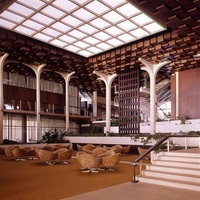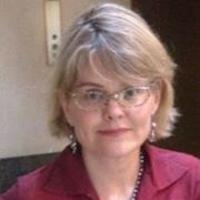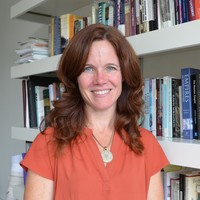Books by Pierre-Jules Andrejko

Through the power of television, the general French public had largely discovered the existence o... more Through the power of television, the general French public had largely discovered the existence of an ancient fortress rising mysteriously from the middle of the Atlantic Ocean by July 1990. This discovery was only made possible via a highly entertaining television game show entitled Les Clés de Fort Boyard. Since then, the name Fort Boyard has become synonymous with entertainment and diversion, providing amusement to generations of children and adults alike. And yet this was not always the case. Prior to 1990, it would have been very difficult for a French person to situate Fort Boyard on a map, let alone to know of its very existence. Entirely abandoned for decades, Fort Boyard (built throughout the 19th century) had finally been auctioned off on 28 May 1962. Though a grouping of local benefactors (calling themselves Les Amis de Fort Boyard) aimed to purchase and save the fortress from destruction, Eric Aerts (a dentist from Avoriaz) placed the highest bid and became Boyard's new owner. Vacationing on site from time to time, the fortress was nonetheless once again abandoned by its new owner. In 1967, a sensational French motion picture entitled Les Aventuriers (starring Lino Ventura and Alain Delon) revived Fort Boyard on screen as millions of cinema viewers discovered a mysterious fortress abandoned at sea. Importantly, its name or exact location was never mentioned in the movie. It was precisely then that the French poet Henri Chopin (1922-2008) conceived the idea of a non-existent art festival situated in this fortress lost at sea. The festival was never advertised as an experimental non-existent event, but rather as a genuine and sincere artistic gathering. It was, to the thousands of people made aware of its existence, to be an authentically real artistic event. By early 1967, a plethora of colorful posters had suddenly appeared in the heart of Paris, particularly near the city's museums and artistic venues. These posters announced the birth of a summer art festival to be held on the remote Fort Boyard. Most importantly,
In 1983, the Hungarian authorities had consented to hosting a series of architectural summer prog... more In 1983, the Hungarian authorities had consented to hosting a series of architectural summer programs entitled International Workshop Seminars. The inaugural event, held in the town of Ráckeve on 23 June 1983, aimed to bridge the various ideological differences between east and west by engendering the architectural paradigm of the future. More importantly, the international students formed by the various Hungarian professors and mentors that summer were to create lifelong relationships as testaments of ideological détente. Attending the 1983 Seminar were professors and students from both sides of the Iron Curtain, including East and West Germany,

Translated from French) "Architecture, that secret science of the religious orders, has disintegr... more Translated from French) "Architecture, that secret science of the religious orders, has disintegrated itself since World War I. Since then, we cannot in all decency solely speak of constructive parts and functions. Georges Lukacs was correct when he stated that architecture is nothing more than practice and fashion: it does not belong to the spheres of knowledge. It nonetheless appears that the forced pragmatism of the 1960s and 1970s is nearing its end. The manipulation of a debased and amputated human and national dignity has reached such a degree of acuity that it has become manifest, and betrayed itself. The recreation centers that we had initially conceived to regulate the neurosis of those second and first generations of city-immigrants coming from rural zones have become venues of education, as is the case for example in Visegrad. We have created playgrounds-which were long forgotten-and monuments to our national poet deceased prematurely, houses which resemble trees of a thick foliage, buildings representing the layout of an interior space-such as a chair or table-within the living spaces of the forest, and, furthermore, they appear as mutants appearing from the depths of the earth. They remind us of ancient Celtic or Scythian habitations that embody symbols. And yet, if we consider their initial raison d'être, they constitute camping grounds, reception areas, dwellings, and farms. All those that visit these places understand their meaning. People are not spiritually weak, men do not represent an inert mass of faceless and terrified creatures, indebted and chained. The Visegrad recreation center has allowed for young architects to find a place to work together so as to develop the realizations they believe give the most meaning to life. Architecture will once again reconquer its natural vocation, by creating "places" in the world that will not be foreign so as to solicit man entirely."

In 1967, a formation of students had anticipated the forthcoming social changes operating within ... more In 1967, a formation of students had anticipated the forthcoming social changes operating within France (and indeed throughout the world) after a rather unusual contestation. On 21 March, male students at the University of Nanterre actively denounced the school's endorsement of 'carceral sexual ghettos' and sexually-segregated living quarters by forcefully occupying the women's dormitories. Through their subversive directives and incantations (including 'make love and then start again' , 'society is a carnivorous plant' , and 'nothing will ever be the same again'), 1 the students had unknowingly presaged the vast national and social changes which would sweep through Europe following the events of May 1968. The academic and social grievances increasingly agitating Paris in the year 1967 were similarly manifested through the birth of a small association of architects, urbanists, sociologists, and philosophers seeking 'a common point of intellectual gravity'. In 1966, Antoine Stinco, Jean Aubert, and Jean-Paul Jungmann had conceived a small gathering entitled AJS Aérolande. Shortly thereafter, a new group was formed revolving around the teachings of the French Marxist philosopher and sociologist Henri Lefebvre. The embryonic nucleus which would subsequently give rise to Utopie was collectively formed by Hubert Tonka

The year 1968, representing the paramount aboutissement of a particularly agitated revolutionary ... more The year 1968, representing the paramount aboutissement of a particularly agitated revolutionary decade, firmly emancipated ad hoc journalism in France and indeed throughout Europe. Jean Schalit (1936-2020), a journalist and Communist cadre regularly contributing to Clarté/Le Nouveau Clarté (France's Union of Communist Students journal), had been expelled by the French Communist Party (PCF) on 23 May 1966 for participating in the non-aligned (and therefore non-Soviet approved) Six Hours for Vietnam conference alongside UC Berkeley's Stephen Smale. By the Prague Spring of 1968, a perceived arbitrary Soviet aggression upon Czechoslovakia (and the PCF's non-condemnation of this aggression) had matter-of-factly splintered France's far-left aggregation into two camps. By 4 May 1968, Schalit had gathered dozens of disgruntled ex-PCF cadres to create an entirely new and highly vociferous non-aligned revolutionary journal free of Moscow's interference. Initially baptized Guérilla, the journal was finally given the name Action after an earlier journal by the same name edited from 1943 to 1952. The Action of 1943-1952, which had once been particularly virulent, was promptly terminated when its journalists refused to blindly engage in an exaggerated form of urssolâtrie, or USSR idolatry. It is therefore telling that Schalit and his team of young journalists had decided to revive (in thought and spirit) a schismatic journal from the embers of the 1950s. The newly revived Action of 1968, an agitprop journal directed by Jean-Pierre Vigier, gathered various PCF-rejected cadres, including Maoists, adherents of the miglioristi and berlingueriani moderate wing of the Italian Communist Party, followers of the French Center for Research and Revolutionary Intervention, as well as excluded members of the Young Christian Students presently calling themselves the Young Christian Academics (Jeunesse Universitaire Chrétienne). Importantly, the journal's état-major was staffed with vigorously spirited elements of the National Union of Students of France (UNEF), the Revolutionary Communist Youth, Nanterre University's Movement of 22 March, and the high school students of the Comité d'Action Lycéen. It was precisely at this moment in time that various underground and ad hoc journals, including the anarchist inspired L'Enragé (The Enraged), rapidly appeared on the revolutionary scene. Other journals spontaneously created and galvanized at this time (and throughout the











Uploads
Books by Pierre-Jules Andrejko